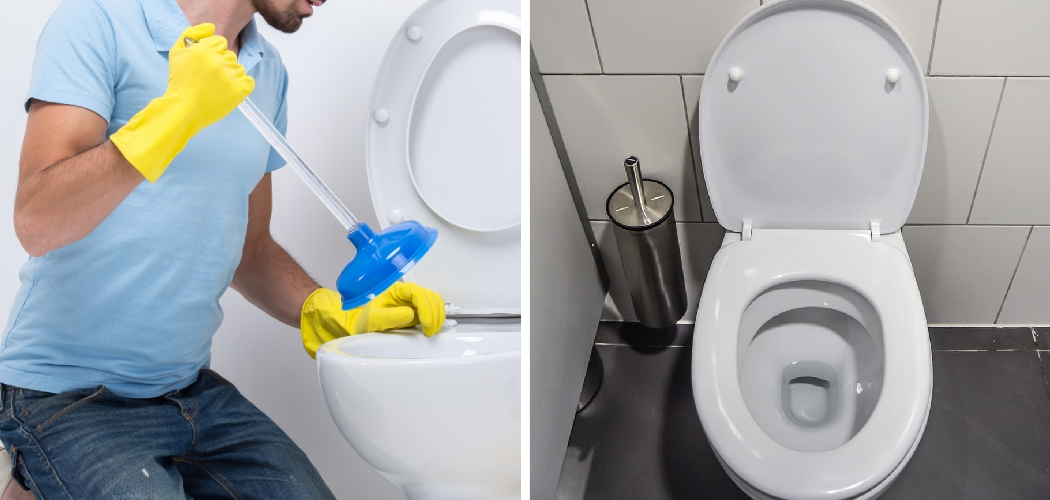Are you experiencing a slow, draining toilet? Is water backing up in the bowl and taking forever to clear? This can indicate a clog, which is usually caused by too much toilet paper or other materials that have been flushed down the drain. The good news is that you can easily unclog your slow-draining toilet without using harsh chemicals or calling a plumber.
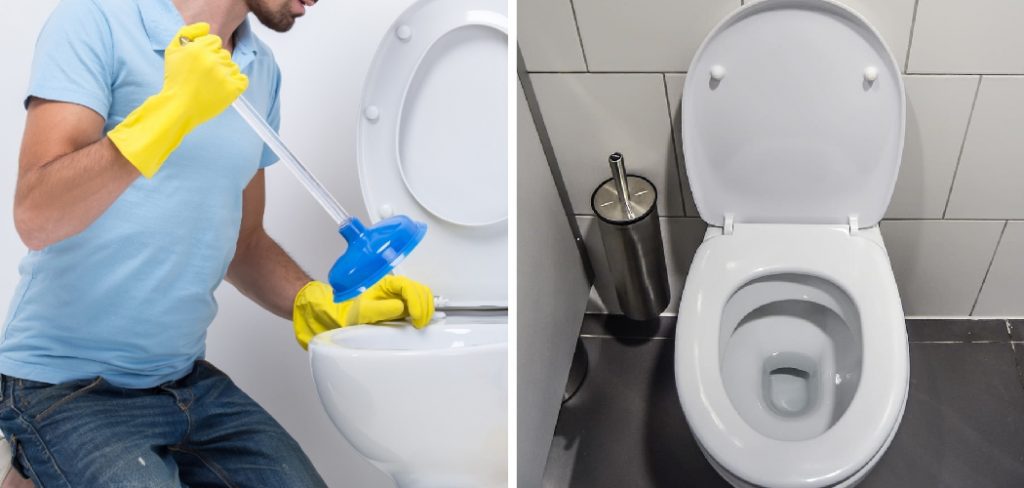
If your toilet is draining slowly or has water that refuses to go down, chances are you have a clogged drain line. The cause of the blockage could be anything from a buildup of soap scum and dirt in your pipes to tree roots intruding on them. Unclogging slow-draining toilets can be inconvenient!
With the right approach and equipment, it doesn’t have to be time-consuming or expensive – we’ll show you how. Read on for our expert guide on how to unclog slow draining toilet!
What Can Make a Toilet Drain Slowly?
The most common causes of slow-draining toilets are clogs in the drainage pipes and the build-up of soap scum, dirt, and other debris. These can build up over time, blocking the pipe and making it difficult for water to flow through.
Other possible causes of a clog include tree roots intruding on your pipes or materials that have been flushed down your toilet, such as wipes, cotton swabs, paper towels, etc.
Additionally, if your toilet is connected to an older plumbing system, it could be clogged due to mineral deposits and corrosion.
What Will You Need?
Before starting, you should make sure that you have the necessary supplies on hand. You’ll need the followings:
- Plunger
- Wet/dry vacuum
- Plumbing snake (drain auger)
- Chemical drain cleaner
- Protective gloves and eyewear
- Bucket
Once you have all your supplies ready, you’re ready to get started on unclogging your toilet!
10 Easy Steps on How to Unclog Slow Draining Toilet
Step 1. Use an Auger or Plunger:
An auger is a plumbing tool used to unblock drains by pushing a long flexible cable into the drain line and breaking up any blockage along its way. You can use a plunger if you do not have an auger. Don’t forget to put on your protective gloves and eyewear before starting.
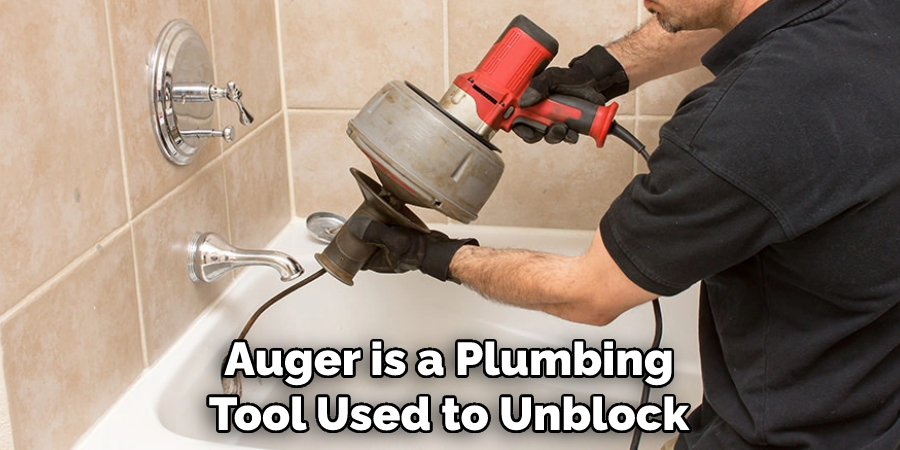
Step 2. Use a Wet/Dry Vacuum:
Using a wet/dry vacuum, you can suck up any debris that may be blocking the pipe. Cover any openings with a damp cloth or tape first to prevent blowing air back into the toilet bowl. You can also use the vacuum to clear out any clogs in the toilet if needed.
Step 3. Disassemble the Toilet:
If neither of these solutions works, you will need to disassemble your toilet and inspect the piping for any blockages. Make sure you turn off the water supply before doing this. You can then use a plumbing snake to break up any clogs.
Step 4. Use Chemical Drain Cleaners:
Chemical drain cleaners are an effective way to break down clogs in slow-draining toilets, but it can also cause damage to your pipes if used incorrectly. When using protective gloves and eyewear, always follow the instructions carefully! It is generally recommended to let the chemical sit in the drain for a few minutes after pouring it.
Step 5. Use Heavy Duty Plunger:
If the clog is still not cleared after using a chemical drain cleaner, you may need to use a heavy-duty plunger and plunge aggressively for several minutes until the water starts draining again. Try plunging several times in quick succession. Otherwise, the water pressure might not be strong enough to dislodge the clog.
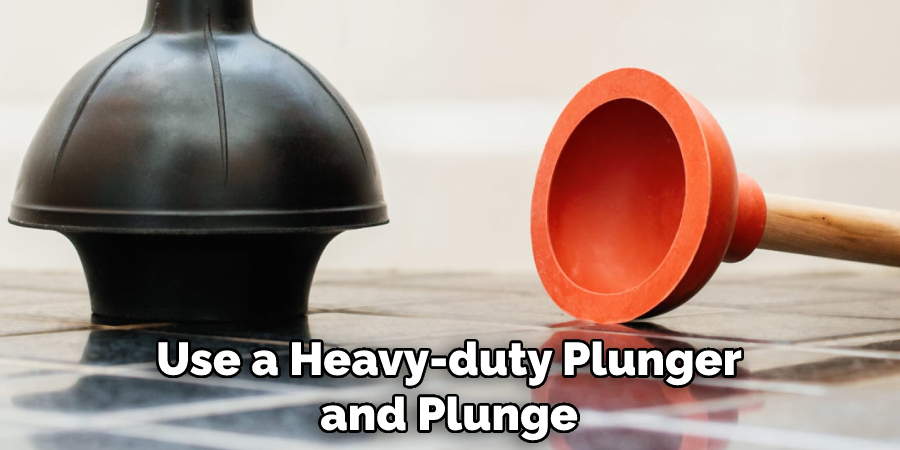
Step 6. Check for Obstructions:
Once the water is flowing freely again, check the pipes thoroughly for any obstructions, such as soap scum or tree roots. If you find any, remove them with a wire brush or pliers. The pipes may also have mineral deposits, which can be removed with vinegar or a commercial descaling product.
Step 7. Reassemble Toilet:
Reassemble your toilet once everything has been checked and all debris removed from the area around it. Make sure that all parts are reconnected properly before turning on the water supply again! Additionally, if your toilet is connected to an older plumbing system, you may need to replace the pipes and fittings that have corroded over time.
Step 8. Flush Toilet:
Once your toilet is reassembled, flush it a few times to make sure that the water drains away easily, and there are no further blockages. If the water is still draining slowly, you may need to repeat steps 1-7 until the issue is resolved. Be careful not to use too much force when plunging, as this could cause damage to the pipes.
Step 9. Check for Leaks:
Check all the pipes around the toilet to make sure that they are not leaking or showing any signs of damage. If you do find any leaks, you may need to call a plumber to fix them. This could save you from having to replace the entire toilet in the future.
Step 10. Prevent Future Clogs:
Finally, take steps to prevent future clogs, such as using a drain strainer in your sink and bathtub, avoiding flushing anything other than toilet paper down your toilet, and cleaning out your plumbing system regularly with baking soda and vinegar. These steps will help reduce the chances of having to unclog your toilet again in the future. Ensure that everyone in your home is aware of how to use the toilet properly!
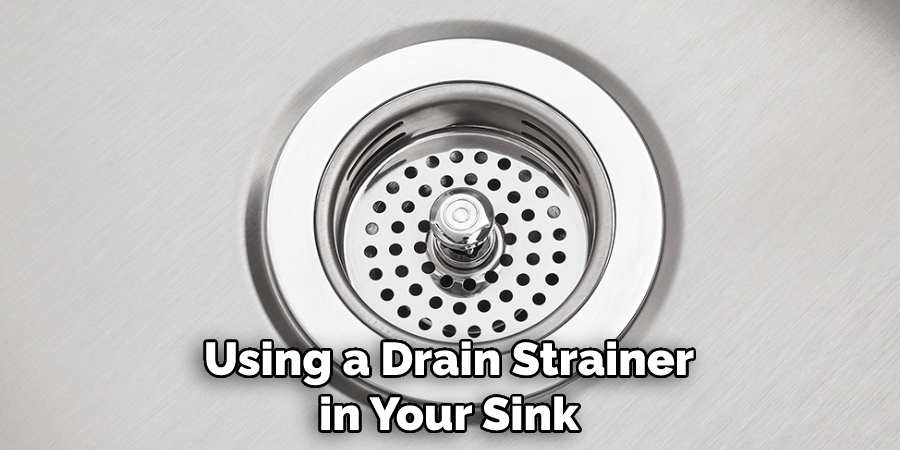
By following these steps, you should be able to unclog your slow draining toilet effectively. It is always important to take the necessary precautions before tackling any plumbing issue in order to prevent further damage. If you need any help or advice, don’t hesitate to contact a professional plumber.
5 Additional Tips and Tricks
1. Remove the Clog Manually: Put on latex gloves and reach into the toilet bowl to remove any clogs that may be present. This is a common cause of slow draining toilets.
2. Remove Excess Toilet Paper Build-up: If you have an old or low-flow toilet, too much tissue can accumulate and wreak havoc on how fast it drains. Try using less toilet paper each time you flush, and make sure to clean out your tank regularly to prevent buildup from occurring again in the future.
3. Try a Chemical-based Drain Cleaner: Store bought chemical agents are designed to dissolve tough blockages in plumbing drains, so they may be effective in helping unclog your slow draining toilet as well. Just be sure to read all instructions on using these products safely!
4. Call a Plumber: If none of these tips were successful at clearing out your slow draining toilet, it might be time to call a professional. Plumbers are experts in all things plumbing, and they can help you determine the source of the problem and how to fix it quickly and safely.
5. Clean Out Your Drains Monthly: One of the best ways to prevent slow drainage from occurring is by regularly cleaning out your drains each month. This will remove any buildup that could eventually cause a clog and make a mess of your bathroom floor! The easiest way to do this is with a mixture of baking soda, vinegar, and hot water poured down the drain once a month.
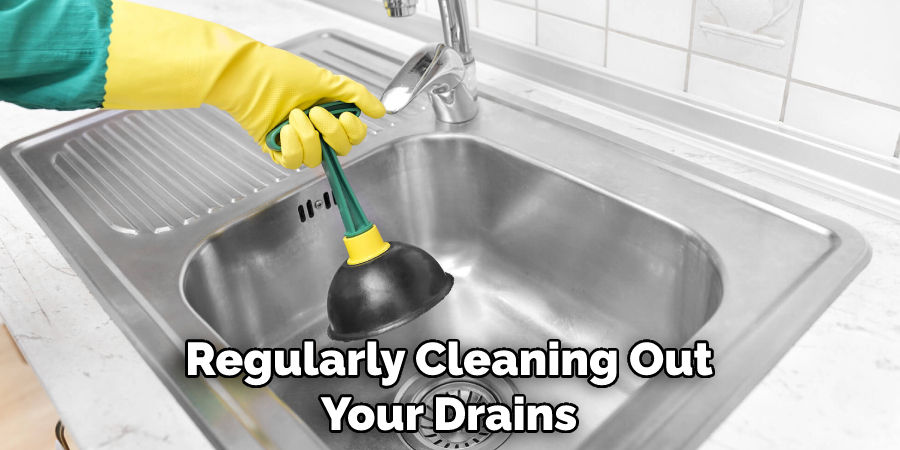
With these simple tips, you can keep your toilet flowing freely for years to come!
5 Things You Should Avoid
1. Don’t Use Chemicals: Chemical drain cleaners may seem fast and easy to unclog your toilet, but using them can cause more harm than good. These products are toxic and hazardous for you and the environment and can damage your toilet’s porcelain bowl or corrode the pipes underneath.
2. Don’t Pour Boiling Water Down the Drain: Pouring boiling water down your slow-draining toilet is not likely to do any good, as it won’t be hot enough to dissolve solid clogs. It could also crack both the bowl and piping if done repeatedly.
3. Don’t Wait Too Long: If you notice that your toilet is slow-draining, don’t ignore it or wait to address the issue. The longer you wait, the worse the clog can become – potentially necessitating professional help to unclog it.
4. Don’t Assume a Liquid Can Flush Anything Down: Just because something is liquid doesn’t mean that it will go down the pipes without causing a backup or blockage in your toilet’s plumbing system. Grease, oil, coffee grounds, and other substances should never be flushed down the toilet.
5. Don’t Use Too Much Toilet Paper: Toilet paper can become lodged in pipes and create clogs, so it’s best to use as little as possible each time you flush. If you’re worried about how much toilet paper you’re using, consider opting for a low-flush or dual-flush model.
These are some steps you can take to unclog a slow-draining toilet. In addition, it’s important to be mindful of how often you’re flushing and what you’re flushing down your toilet. With regular care and maintenance, you should be able to prevent slow draining toilets in the future.
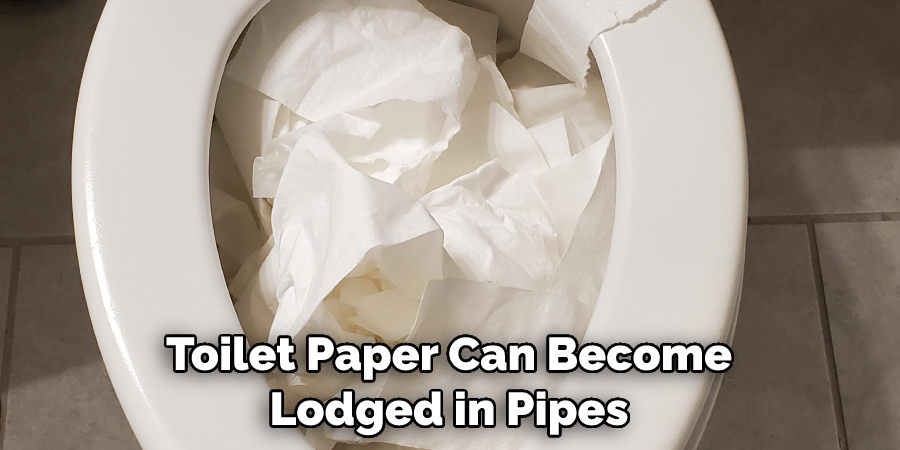
What is the Best Chemical for Unclogging Toilet?
The best chemical for unclogging a toilet is an enzyme-based cleaning agent. Enzyme cleaners are designed to break down and dissolve organic matter that accumulates in your pipes, such as soap scum, hair, and grease. They work quickly and effectively to clear out clogs without damaging the porcelain of your toilet or corroding the piping underneath. For best results, make sure you follow the directions on the bottle carefully before using any product.
If you’re still experiencing slow draining after using a chemical cleaner, it may be time to call in a professional plumber for assistance. A plumber will be able to assess the issue more thoroughly and determine if deeper issues need to be addressed. In some cases, a clog may require more than just an enzyme cleaner to be cleared out.
You may want to use a plunger or auger for larger or harder-to-remove clogs. These tools can help break up stubborn blockages and help restore the flow of water in your toilet. Be sure to use caution when using these items – if used incorrectly, they could damage your plumbing system.
5 Precautions You Can Take to Avoid Clogs
1. Use Strainers on All Drains: Strainers effectively prevent large items from going down your plumbing system and causing clogs. Place them on all of your drains – in the sink, shower, and toilet – to filter out any debris that may cause a blockage.
2. Don’t Flush Anything but Toilet Tissue: Although it may seem like common sense, people still make the mistake of flushing items down their toilets that shouldn’t be flushed. This includes paper towels, wipes, cotton swabs, and other household products, even if they’re labeled as ‘flushable.’
3. Don’t Pour Grease or Oil Down the Drain: Grease and oil can solidify in your pipes and create a major blockage. To avoid this, pour used cooking oil into an old container and discard it with the trash.
4. Don’t Ignore Signs of Slow Draining: If you notice that your toilet is slowly draining, don’t ignore it or wait to address the issue. The longer you wait, the worse the clog can become – potentially necessitating professional help to unclog it.
5. Schedule Regular Plumbing Maintenance: Regular maintenance from a qualified plumber can help keep your drains clear and ensure that any potential issues are caught before they become serious problems.
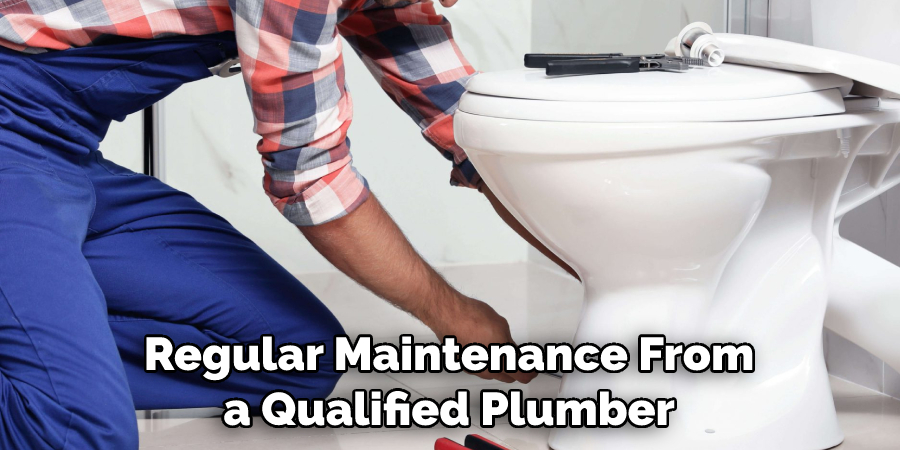
Taking the time to care for your plumbing properly can save you money, time, and headaches in the long run. Following these tips can help prevent clogs and keep your drain pipes clear. With the right maintenance and care, you should be able to keep your toilet running smoothly for years to come.
Conclusion
In the end, attempting to unclog your slow draining toilet is a tedious task. But when confronted with such a situation, you can feel confident that using a plunger and or moving water method will help resolve the issue. Furthermore, utilizing eco-friendly cleaning solutions may be an ideal choice for those concerned about potential damage to the plumbing system.
Additionally, it is worth noting that slow draining usually indicates a build-up of hair and grime in the pipes, so at least once per month drain opening prevents clogs from forming and making energy-efficient toilets and not flushing too much paper down at once may also be smart measures.
Overall, trying to unclog your slow draining toilet should be done carefully with patience and understanding since these methods require time and care to use them effectively. With this conclusion, we hope that our tips on how to unclog slow draining toilet have been useful – good luck!

